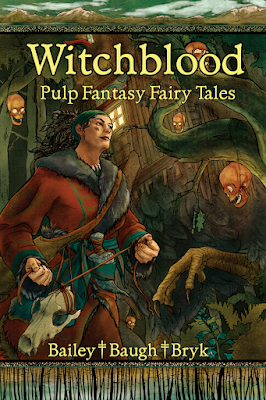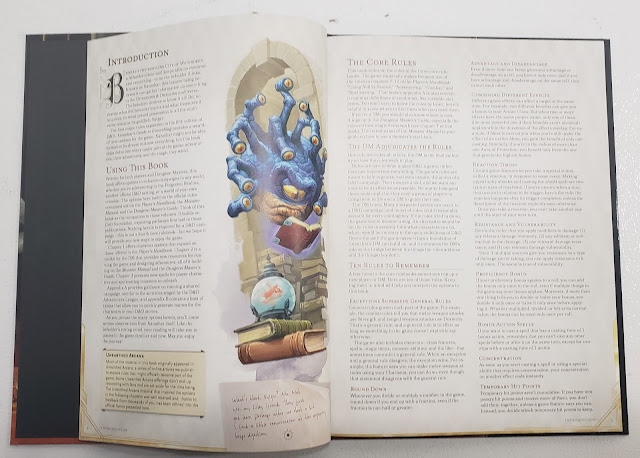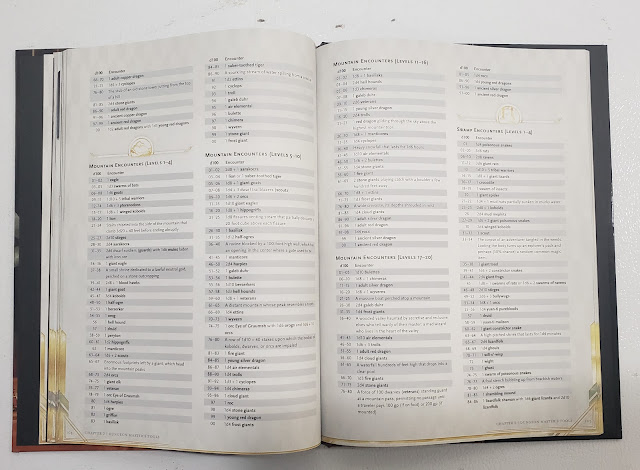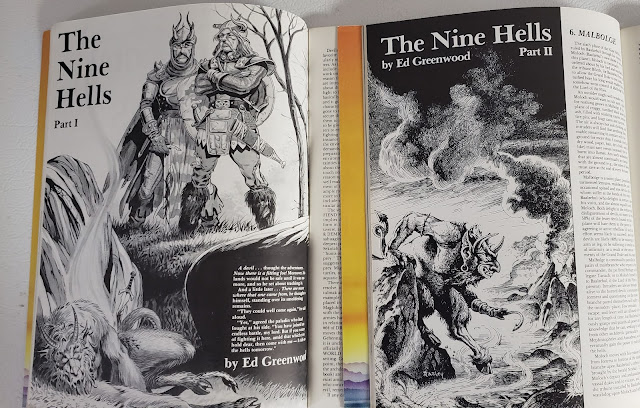Today I want to discuss Warlocks in NIGHT SHIFT.
Warlocks are a different class from witches in my Old-School games. Warlocks get more powers but far fewer spells to cast. Witches and warlocks cast spells from the same group, Occult Spells, and there are even a few power overlaps. Both have patrons, but these patrons demand more of the warlock than the witch.
In NIGHT SHIFT, they are interchangeable in terms of mechanics. The differences largely lie in roleplaying.
I have two different warlock books, each covering a different OSR system (Swords & Wizardry and OSE) and different types of warlocks. I have discussed the differences between the two books before, but for today I want to talk about what each offers NIGHT SHIFT.
The Warlock
In the case of both books, if you choose to play a warlock in NIGHT SHIFT use the Witch class from the Core. Could you use the S&W or OSE Warlocks as is? Sure, but I have to point out I have never play-tested the warlock under the NIGHT SHIFT rules. It *should* work, but I can't promise that there isn't some odd little system things that might come up.
With the warlock, it is much less about one-to-one conversions as it is a role-playing one.
Start with the NIGHT SHIFT witch class and add invocations and spells as appropriate to whichever warlock pact and/or lodge you want to play.
Pacts
Warlocks have pacts. This is pretty much a given in FRPGs today, but it bears repeating. These pacts are almost like subclasses, in a sense.
The Warlock for Swords & Wizardry has: Cthonic, Demonic, Diabolic, and Fey pacts.
The Warlock for Old-School Essentials has: Chaos, Cosmic, Death, and Dragon pacts.
Each of these gives us a slightly different warlock. Sure to the outsider Chaos and Demon pact warlocks act the same and the differences between Demonic and Diabolic might be purely academic, but to the warlocks in question they are all the differences they need.
Lodges
Witches have covens, and warlocks have Lodges. These are groups of like-minded warlocks (and sometimes others) to achieve a specific Earthly goal. Often they have members of the same pacts, but not always so. Characters will typically not deal with "Demon Pact Warlocks" but more often "The Lodge of a Particular Demon Lord."
Like the pacts, each book offers different lodges.
The Warlock for Swords & Wizardry has: Ascension Lodges, The Dark School of the Scholomance, Goetic Lodges, The Grand Coven, The Hermetic Lodge, the Lodge of Pure Thought, and the Masters of the Invisible College.
The Warlock for Old-School Essentials has: The Academy of Noble Stargazers, Chaos Cults, The Dragon Cult, and The Lords of the Undying.
All of these would be right at home in a NIGHT SHIFT game. The Scholomance would be a great rival school in Generation HEX. Most, if not all, these lodges would find a home in Jason's "Veterans of the Supernatural Wars" Night World setting. Indeed many of the groups would work with my Hermetic Lodges. In his "Nocturumverse" his Esoteric Order of Gnostics would follow my lodge rules, as would his Rosicrucians.
My "Ordinary World" setting also has a lot of room for warlocks. Angels and demons battle each other and seek mortal aid in their wars. Fey lords and ladies plot and scheme, and who knows what else is out there hiding and waiting.
Erika Lenard
3rd Level Witch (Warlock)
Strength: 10 (0)
Dexterity: 17 (+2) S
Constitution: 14 (+1)
Intelligence: 15 (+1) S
Wisdom: 12 (+0)
Charisma: 16 (+2) P
HP: 13
Alignment: Light
AC: 9
Attack: +0
Fate Points: 1d6
Check Bonus (P/S/T): +3/+1/+0
Melee bonus: 0 Ranged bonus: +2
Saves: +3 against spells and magical effects
Witch Abilities
Arcana, Supernatural Senses, Spells, Arcane Powers
Arcane (Occult) Powers
Familiar, Talk to Animals
Skills
Knowledge (Egyptian History)
Gear
Cellphone, Cat-ear Bluetooth headphones.
Spells
First Level(2): Detect Magic, Sleep
Second Level(1): Animal Summoning
Erika Lenard always knew she was different. Very different. Even at a very young age, she could understand animals, particularly cats. It was a school field trip to the Field Museum of Natural History in Chicago that she heard the voice of Sekhmet. She passed out and the next thing she knew, she was surrounded by her classmates, and she could see the Goddess Sekhmet.
Sekhmet has given her the spells she knows and has instructed her via her cat-familiar Isis.
She has so far, used her ability to summon cats as a means to help find a missing child and even attack a would-be burglar. Though Sekhmet has mentioned that she has greater plans for Erika.
Erika is currently being watched by several groups, including the OTO, the Rosicrucians, and the One True Way. Each with their own plans for her.
You can get NIGHT SHIFT in print and pdf. You can get The Warlock for Old-School Essentials and The Warlock for Swords & Wizardry in print and pdf.
--
Want to see more of the #CharacterCreationChallenge? Stop by Tardis Captain's Blog and the #CharacterCreationChallenge on Twitter for more!





































